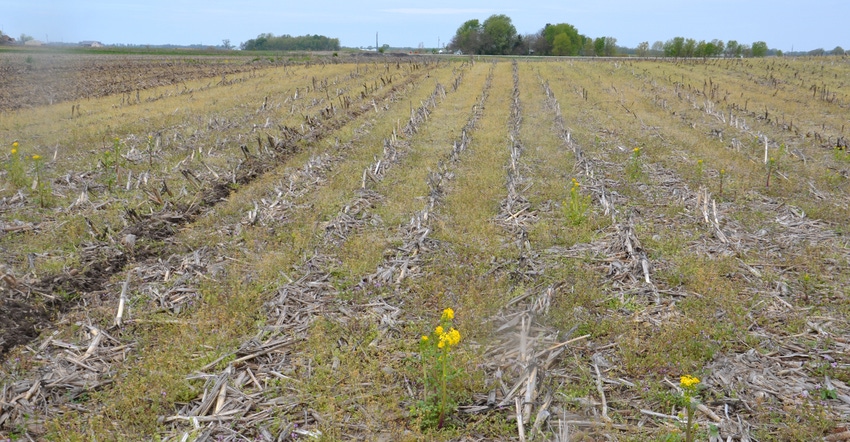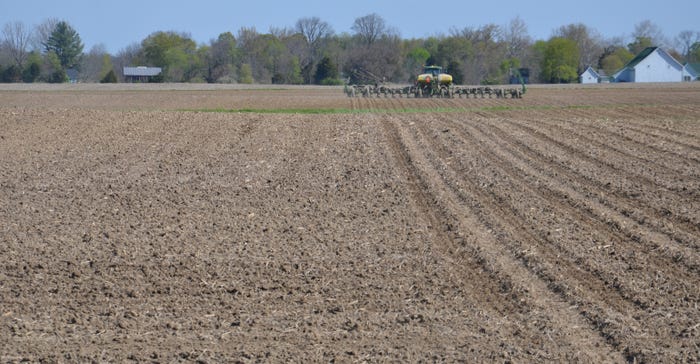
There are herbicide options to control weeds effectively in corn no matter which crop rotation or tillage system you use. Weed control specialist Bill Johnson says the strategy is the same: Choose time-tested products and pay attention to the fine print on labels to make sure you don’t trip yourself up on details.
If you need a refresher course on herbicides available for weed control in corn, refer to the 2022 Ohio, Indiana and Illinois Weed Control Guide, suggests Johnson, with Purdue University Extension.
“If you have identified problem weeds in each field, you can go to the guide and see how weed specialists across these three states rate each herbicide for control on the weeds you have,” Johnson says. “From there, you can narrow it down to a short list of herbicides, which should control both weeds and grasses in corn.”
2 scenarios
Johnson offers suggestions on controlling weeds in no-till and conventional corn production:
1. No-till corn after corn. For the photo at top, Johnson says if he was there in person, he would scout the entire field to determine which weeds were present and rate the apparent weed pressure for the toughest weeds. “We have a winter annual, cressleaf groundsel, and a smattering of various broadleaf weeds and grasses,” Johnson observes. “Overall, weed pressure doesn’t appear to be heavy.”
The weed specialist says that if this was his field, he would apply a broad-spectrum herbicide mixture with residual activity and add a pint of 2,4-D per acre to finish off winter annuals. Since different 2,4-D products vary in the amount of time, if any, between application and planting, or between application and spiking, it’s critical to read and follow the label for the 2,4-D product you select. Some require up to seven days between application and planting corn, he notes. Others allow you to apply in a field like this one so many days before spiking.
Another product to add to the broad-spectrum herbicide, instead, would be dicamba. Ahead of corn, there are no label restrictions between application and planting with dicamba.

2. Conventional corn. Controlling emerged weeds would not be a problem in this field above — tillage took them out. “That could be an advantage this year when supplies of certain herbicides, like glyphosate, glufosinate and 2,4-D may be in short supply,” Johnson says,
Any of several broad-spectrum, residual herbicides should control weeds, Johnson says. The list would include any of the atrazine premixes or Acuron, Resicore, Armezon Pro, Verdict and Corvus. Some of these herbicides already include atrazine, such as Acuron. Others, like Resicore, do not. Johnson suggests adding atrazine to products that don’t already include atrazine to help control tougher weeds.
About the Author(s)
You May Also Like




